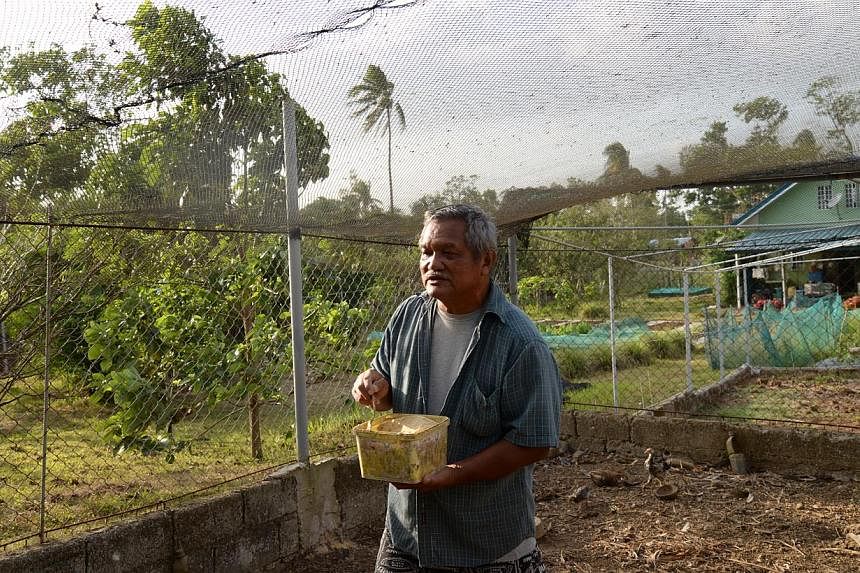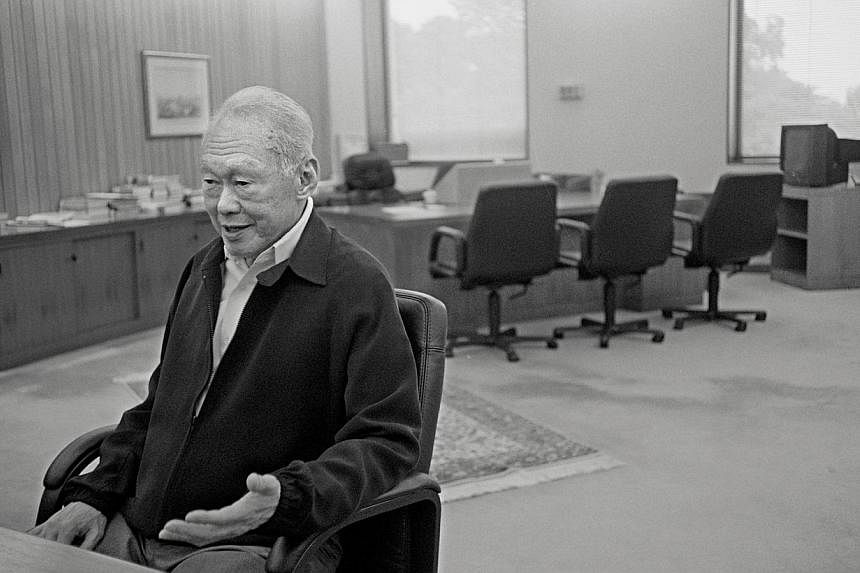He did not crowd a room, bark instructions or prance around.
And because he knew how to observe without intruding, Mr George Gascon earned the privilege of gaining access to a man known for being exacting in all his affairs, Mr Lee Kuan Yew.
For seven years, as a photographer with The Straits Times, Mr Gascon recorded Mr Lee for posterity.
He witnessed unguarded moments of tenderness: Mrs Lee lovingly combing Mr Lee's hair before a photo shoot. He was there when Mr Lee hosted important world figures, lingering on when all the other photographers had been ushered out, prompting quizzical looks. Who was this man with the camera and the Charles Bronson moustache?
Mr Gascon joined The Straits Times in 1992. Three years later, he was asked to take pictures when Mr Lee was being interviewed for the book Lee Kuan Yew: The Man And His Ideas.
His brief was to go in, take a few shots and then head for the door. Mr Lee was not known to be an easy subject; the first photographer assigned to the job had managed to get just 17 shots before being told the session was over.
To his surprise, Mr Gascon ended up staying for two hours as Mr Lee spoke.
In an interview with The Sunday Times last Thursday at his farm, south of Manila, where he has lived since retirement, the 62-year-old paused to reflect on what made Mr Lee trust him.
"I paid attention to how he was reacting.
"I went to one side. He seemed okay with it.
"Then I went to the other side. Still okay.
"Then I began circling him.
"When he went to the toilet, one of the editors who were interviewing him said I was moving too much and making too much noise.
"I told him, 'But he doesn't seem to mind.'
"He said, 'Yeah, why is that?'" said Mr Gascon.
At the end of the shoot, Mr Gascon had used up 12 rolls of film of 36 shots each.
His boss told him: "You just earned your bonus."
He had been told to lug a tripod, a strobe light and a flashgun, but Mr Gascon said he instinctively knew that bursts of light and a noisy shutter would get him sent out faster than he could say "Cheese".
All he took was a camera. The only lighting was sunlight.
To keep his nerves steady, he thought of Mr Lee not as one of Singapore's most powerful men, but as a father or a grandfather.
Mr Gascon said that when he was next invited to the Istana, Mrs Lee walked up to him. "So you're the photographer? Thank you very much, George, for the wonderful pictures of my husband."
From that point on, Mr Gascon became "George".
At official functions, Mr Lee would acknowledge Mr Gascon with a slight nod. He would be invited not just to the Istana but to Mr Lee's home in Oxley Road and to occasions as intimate as a family birthday party.
Mr Lee's office would often consult the photographer - what shirt colour would work best for a shoot, what was the ideal spot in the Istana for group portraits of some of the world's most important men?
During photo sprays, he would be allowed to linger and he could move outside the security rope and shoot from any angle he wanted.
When Ms Megawati Sukarnoputri, former Indonesian president, paid Mr Lee a courtesy call in 2000, she noticed that everyone had been led out of the room except for one man.
"Who is he?" she asked her host.
Mr Lee told her: "This is George Gascon. He's my photographer. He's from the Philippines."
Mr Gascon said: "I felt my pride swelling, for someone so important to introduce me to someone equally important."
He said the freedom Mr Lee gave him allowed him to capture some little-seen facets of the leader. For a meaningful photograph can capture more than facial features, it shows a man's thoughts, he said.
Mr Gascon particularly remembered one shot where Mr Lee clasped his cheeks with his palms. "You can feel his exasperation in that photo, at having to belabour a point, at trying to overcome stubbornness with patience," he said.
It was also the unguarded moments that he cherished. In a photo shoot for the first of Mr Lee's two-volume memoirs, Mr Gascon was invited to Mr Lee's house.
He was asked to take a photo of Mr Lee in front of a computer, so that Singapore's seniors could see that they had nothing to fear from technology.
As they were preparing for the shoot, Mr Gascon caught a glimpse of Mrs Lee combing Mr Lee's hair.
It was a moment that Mr Gascon dearly wished to capture. So he took out his Leica, knowing the quiet shutter would not intrude into the tenderness.
Yet, even with her back to Mr Gascon, Mrs Lee heard the clicking of the camera.
She said: "George, I heard that."
When Mr Lee learnt that Mr Gascon was planning to leave Singapore and retire in the Philippines, he asked to see the photographer.
For about 20 minutes, Mr Lee met Mr Gascon and his wife, trying to persuade them to stay on.
"But I had already made up my mind," said Mr Gascon.
As parting advice, Mr Lee told Mr Gascon to take good care of his hard-earned money. The advice has served Mr Gascon well. He placed about $100,000 of his Central Provident Fund savings in an investment fund with DBS Bank. When that fund matured, he transferred the money to a Philippine account, where it serves as a buffer against emergencies.
Mr Gascon now spends most of his days at his 500,000 sq m farm, in Cavite province's Mendez town, a three-hour ride from Manila. He gets most of what he needs from the farm, spending no more than $500 a month.
"I'm at peace here," he said.
He was tending to his garden when he heard the news of Mr Lee's death. Gathering the most fragrant herbs and most colourful flowers from his farm, he arranged them around a portrait of Mr Lee, the one that eventually became a book cover.
He lit a candle and said a prayer for the man to whom he would always be "my photographer".





